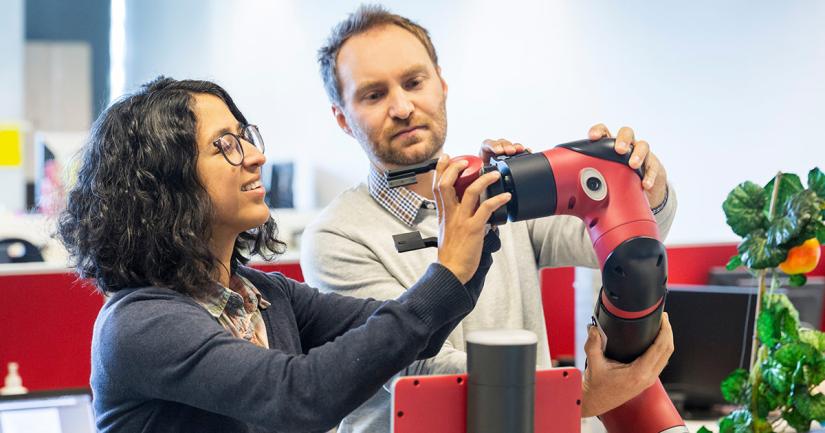The UTS Robotics Institute is a world-leading institute in autonomous and human-centered robotics.
Who we are

Expertise
Field robotics for sensing, perception and control of intelligent machines in unstructured, complex and hostile environments
Assistive and human interactive robotics to undertake a wide range of tasks across health, mining, infrastructure, defence, space and transport sectors
Enhanced decision making, coordination and control in robot-robot and human-robot
teams to execute complex tasks
Intelligent machines for autonomous infrastructure inspection, assessment and maintenance
Bio-inspired robotics for enhanced wall climbing mechanisms and adaptable morphologies for confined or dangerous spaces
History
The UTS Robotics Institute, established in 2020, has its roots in the highly successful UTS Centre for Autonomous Systems (2010 – 2020). This centre was part of the ARC Centre of Excellence for Autonomous Systems (2003 – 2010), one of the world's largest robotics research groups, boasting over 200 researchers.
Under the inaugural leadership of Emeritus Professor Gamini Dissanayake, followed by Distinguished Professor Dikai Liu, and now Professor Sarath Kodagoda, it experienced remarkable growth.
Today, the UTS Robotics Institute stands as a global leader in SLAM, infrastructure, and assistive robotics. We specialize in delivering real-world solutions to address critical challenges faced by governments, industries, and communities.
Vision statement
Our vision is to become the foremost global research institute in the field of robotics, recognised for our pioneering research, impactful contributions, and commitment to fostering innovation and education.
Strategic pillars
The UTS Robotics Institute research strategy consists of three research pillars:
- Fundamental research
- Applied research
- Research translation
These three pillars facilitate a robust and sustainable framework for achieving research goals from diverse funding sources and for achieving tangible impact through a variety of pathways.
